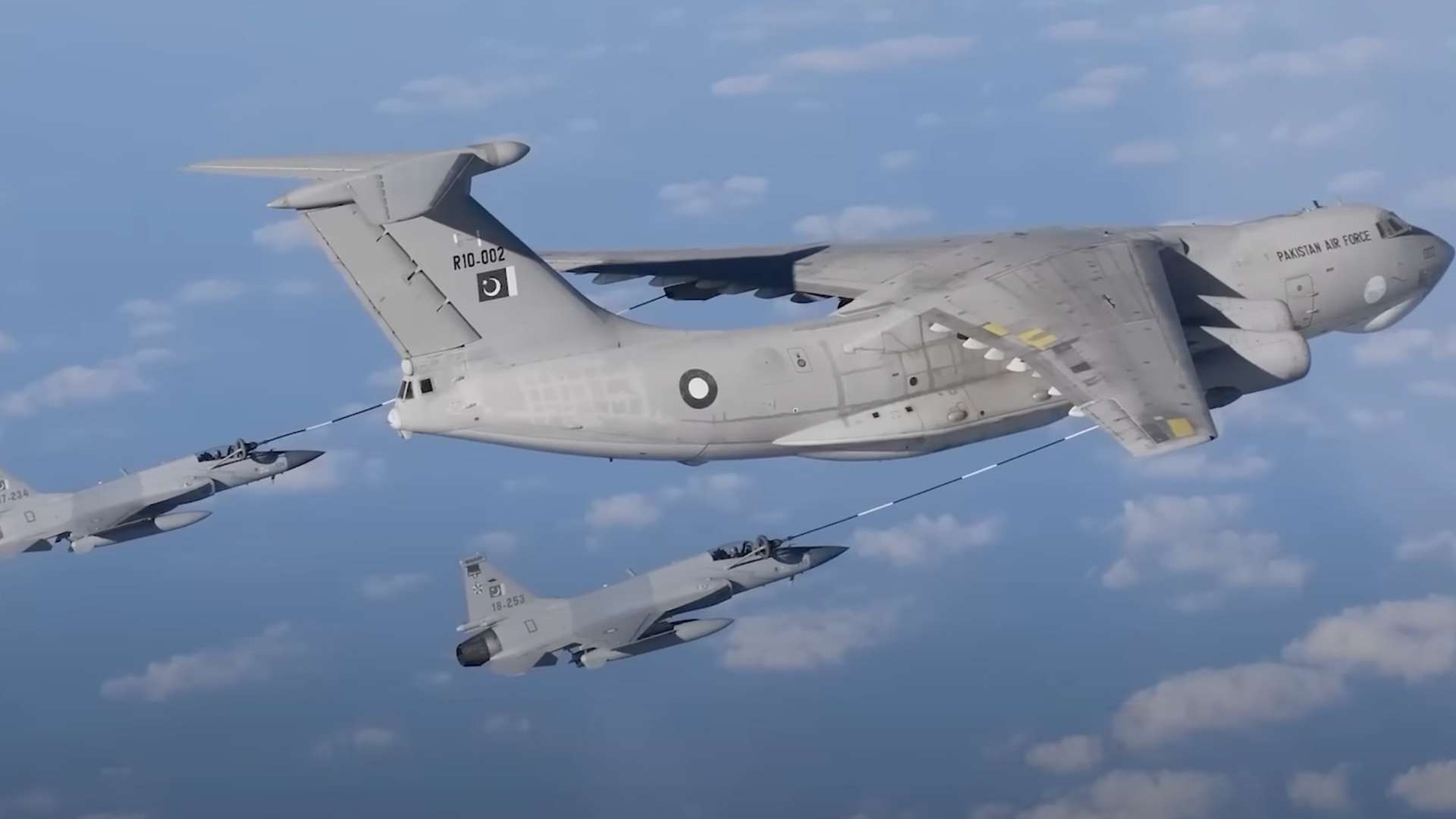3760Views

Defence Uncut | The Fight Pakistan Expected vs. The One It Got Defence Uncut Podcast
The recent conflict with India initially unfolded along the lines Pakistan expected: Following the Balakot incident and Operation Swift Retort in 2019, the Pakistan Air Force (PAF) had prepared for a large-scale Indian Air Force (IAF) strike at stand-off range.
Equipped with new long-range air-to-air missiles (LRAAM), long-range surface-to-air missiles (SAM), and dense electronic warfare (EW) coverage, the PAF planned to directly intercept an IAF stand-off range strike while the attacking aircraft were still within India.
During those first crucial hours of May 7th, it appeared that the PAF had successfully built upon its strong showing in 2019. However, over the next 72 hours, India regrouped and brought a fight that the PAF – and the Pakistani military at large – was not prepared to fight.
India brought “a very different kind of fight.”
India took the IAF off the field and, in its place, heavily leaned on a vast array of loitering munitions and, most importantly, a gamechanger strike asset in the BrahMos supersonic-cruising missile (SSCM).
Indeed, while the initial – i.e., IAF-led – action of Operation Sindoor evidently did not proceed as planned, India was, nonetheless, credibly able to show it could penetrate Pakistan’s burgeoning air defence system and engage the PAF before its fighters could even get off the ground.
Ultimately, neither Pakistan or India will disclose their actual losses, but the battery of satellite imagery over the PAF’s key facilities – including major operating bases (MOB) in its interior, like Shahbaz Air Base – told the story: if the BrahMos was used at scale, Pakistan’s airpower could have been deprecated.
Strategically, India held the momentum at the end of the conflict.
When Advanced Air Defence Meets Geographical Reality
In our inaugural episode, our analysts – Arslan Khan and Aseem ul-Islam – assessed that while Pakistan’s newly acquired air defence systems from China, like the HQ-9BE, did intercept a number of BrahMos SSCMs, Pakistan’s air defence system was not equipped to intercept the BrahMos at scale.
This was not an indictment on the inherent quality or performance of the HQ-9BE; rather, the actual issue was the fundamental mismatch between systems designed for China’s vast strategic depth to Pakistan’s relatively compressed geo-strategic space.
“From detection to interception, it’s a matter of seconds,” explained Arslan Khan, “Something like the FD-2000, the claimed interception range on the data sheets is about six to 20 kilometers. That does not give you a whole lot of time.”
This geographic constraint creates a detection and engagement problem that even sophisticated air defense systems struggle to solve. When supersonic cruise missiles can reach interior Pakistani air bases within minutes of launch, the traditional layered defense approach faces basic physics limitations.
The experience mirrors historical patterns in South Asian conflicts.
In 1971, India’s introduction of the subsonic Styx anti-ship cruise missile created similar challenges for Pakistan’s Navy, which lacked adequate countermeasures at the time. The Brahmos appears to represent a comparable technological disruption.
The Production vs. Design Dilemma
Pakistan’s counter-operation on May 10th – Operation Bunyan’un-Marsus – revealed another weakness: the gap between defense design capabilities and production capacity.
While Pakistan claimed to destroy S-400 systems and Brahmos sites, the operation appeared rushed and primarily designed for domestic consumption rather than strategic effect.
This reflects a broader problem in Pakistan’s defense industry approach.
As aerospace engineer Asim al-Islam observed in our discussion, Pakistan showcases impressive designs at trade shows – including numerous loitering munition concepts – but struggles with production scale when operational requirements emerge.
“Pakistan only started doing loitering munitions a couple of years ago,” notes Islam. “I don’t think we have enough of a stockpile to have responded to India on those nights.”
The contrast with India’s deployment of hundreds of various loitering munitions – from advanced Harop and Harpy systems to simpler designs – illustrated this production gap.
Pakistan’s defense industry has become “design-heavy but production-light” – i.e., it can showcase a product or even develop a prototype, but can it ramp up to full-scale production? In this episode, we look at several options Pakistan could employ to build its loitering munitions stockpile.
Battle Damage Assessment and the Space Disadvantage
Perhaps the clearest indicator of the conflict’s outcome was the battle damage assessment (BDA) each side could provide. India produced satellite imagery showing precise damage to Pakistani facilities, while Pakistan struggled to provide equivalent evidence for its claimed strikes against Indian targets.
This disparity reflects Pakistan’s underdeveloped space capabilities compared to India’s mature satellite reconnaissance program. In an era where international perception increasingly relies on visual evidence, the ability to “show receipts” has become as important as actual operational success.
The BDA gap also highlighted deficiencies in Pakistan’s intelligence, surveillance, and reconnaissance (ISR) capabilities. Unlike the 2019 Swift Retort operation, where the PAF provided detailed footage from H-4 standoff weapons, the 2025 strikes lacked comparable documentation.
Strategic Implications and Lessons
The May 2025 conflict offers several strategic lessons for Pakistan’s defense planning:
Integrated Response Requirements
Pakistan’s counter-operation appeared to lack the operational-level cohesion demonstrated by India’s phased approach. While individual services performed adequately, joint coordination seemed insufficient for the intensity of modern conflicts.
Industrial Base Limitations
Pakistan’s inability to respond with comparable munition volumes highlighted the need for either domestic production scaling or strategic partnerships with countries possessing industrial capacity.
Space and ISR Gaps
The inability to control post-conflict narratives through credible BDA represents a critical vulnerability in an era of perception-driven conflicts.
Geographic Constraints
Pakistan’s limited strategic depth necessitates defense solutions specifically designed for its operational environment rather than adapted from other theaters.
Listen to the Full Discussion
You can listen to the complete episode of Defence Uncut (and subscribe to future episodes) below or through your preferred podcast platform.
If you would like to read more about what was discussed in this episode, check out the links below:
- Four Days in May: The India-Pakistan Crisis of 2025 by Christopher Clary at Stimson Center | Click Here
- At least two Indian jets appear to have crashed during Pakistan strikes, visuals show by Imogen Piper, Jarrett Ley, Evan Hill and Maham Javaid at the Washington Post | Click Here
- 2025 India-Pakistan Conflict: High-Level Notes by Quwa | Click Here
- How China Helped Build Pakistan’s Air Power by Quwa | Click Here
If you have any questions, comments, or news topic suggestions you would like to hear us discuss, then send us an email at podcast@quwa.org.


